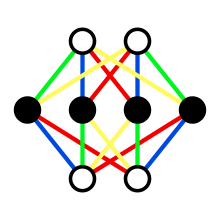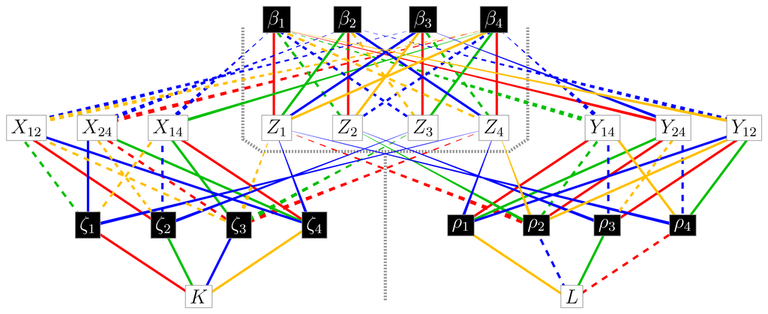
A symmetry is any transformation that leaves a shape or a physical system unchanged.

For a symmetric form, it is impossible to tell whether the given transformation has been applied to it. The “before” and “after” forms are exactly the same. Some of the deepest principles of life are best expressed as statements about symmetry.
The concept of symmetry is as fundamental as time, information, causation in our universe.
Symmetry Facts

- A mirrored or flipped shape is identical to the original.
- Symmetry is defined as invariance under transformation;
- X is symmetric if it is impossible to tell whether or not a given transformation has been applied to X.
- Symmetry can be applied to patterns as well as shapes, just as in a pattern of tiles on a floor.
Mathematicians and physicists apply the concept of symmetry to the laws of nature.

Laws of nature can have a symmetry of their own. Given a situation, a law allows us to predict the behavior of a system. Given a possible transformation of a system, the law is symmetric if the original and transformed situations have exactly the same behavior.
- Translation symmetry means that there is no location in space with special properties laws work the same everywhere.
- Exchange symmetry says all particles of a certain type (electrons, protons, etc.) are identical to others of that type.
Every symmetry of the laws of physics leads to a conservation law, and every conservation law arises from a symmetry of the laws of physics.

This relationship was first proposed by German mathematician Emmy Noether, a contemporary of Albert Einstein. Mathematics has made the study of symmetry a tool for exploring the depths of reality.
The most surprising of the many symmetries of nature is translation in time.

The laws of nature apply equally at all times. Why is this surprising? It means that it is impossible to tell what time it is in absolute terms. Noether argued that, because of this symmetry, it is impossible to build a perpetual motion machine. Noether’s theorem, originally proved in the context of classical, Newtonian physics, works even better in quantum theory.
The laws of physics also have symmetries associated with approximate conservation laws.

Ultimately, this principle of symmetry allows us to hold a mirror up to theoretical universes and see whether it is possible to distinguish them from our own. In that way, we learn more about the laws of our own universe.
Examples of Symmetry
- Fabric or wallpaper or tile patterns. These symmetries may involve translation in space, reflections, rotations, or combinations. The ceiling of Lotfollah mosque, Isfahan, Iran has 8-fold symmetries.

- The capital letters of the Roman alphabet (A, B, etc.) have different symmetries in their shapes.

- Adinkra symbols made famous by Dr S. James Gates Jr. are used in supergravity theory and supersymmetric representation theory. Mathematically they can be described as colored finite connected simple graphs. They are a graphical representation of supersymmetric algebras.

images : wikipedia
Very interesting post. I'm a big fan of symmetry.
very nice post :) would be nice if you check my channel, perhaps u like my art. i followed you! keep it on <3 kalipo
Will you please stop spamming everyone's post with the same comment? The community won't stand for it very long. Flagged for spam
